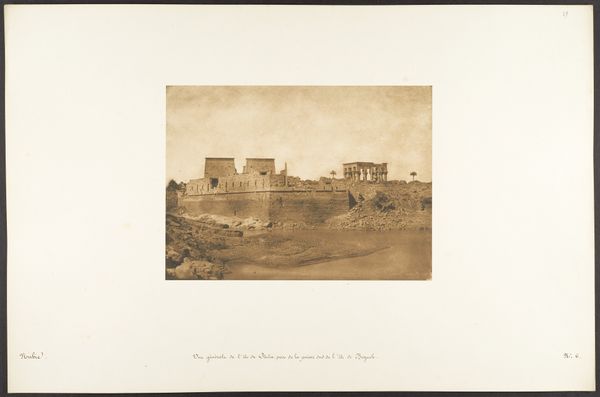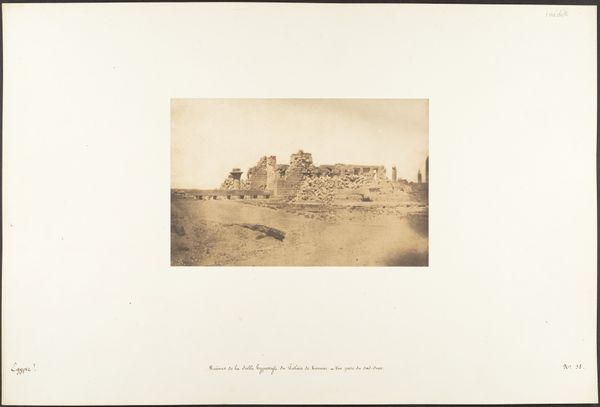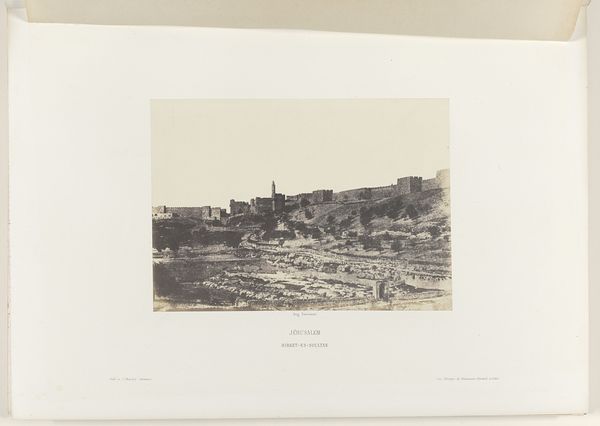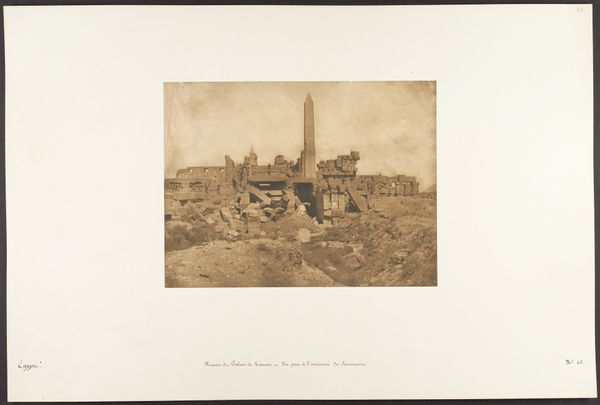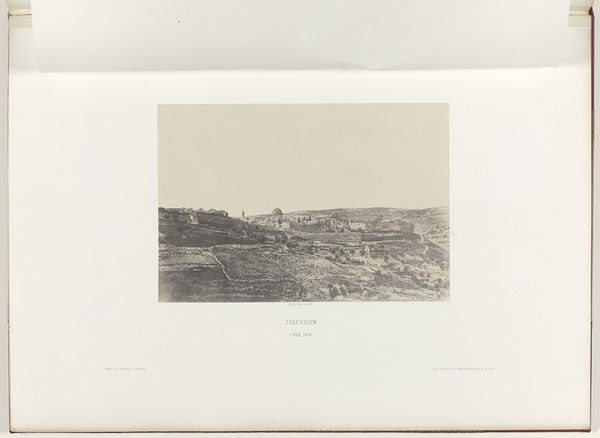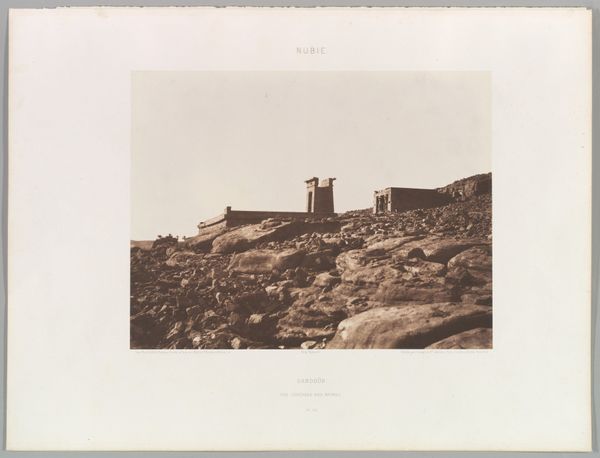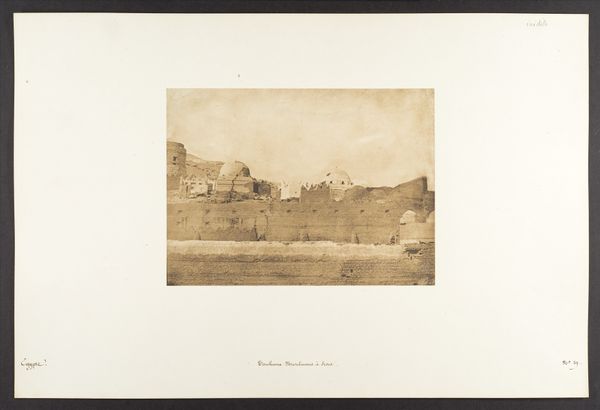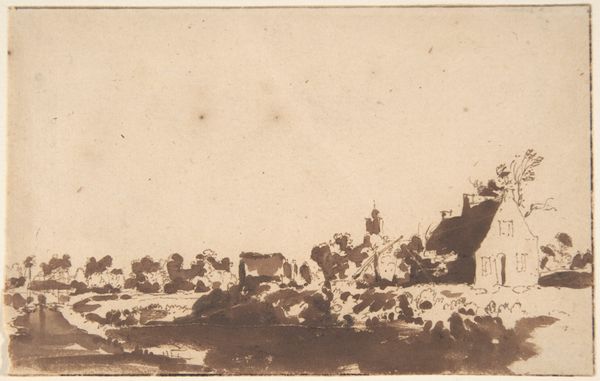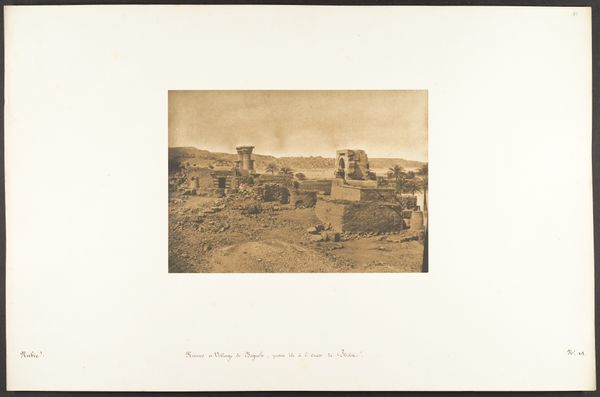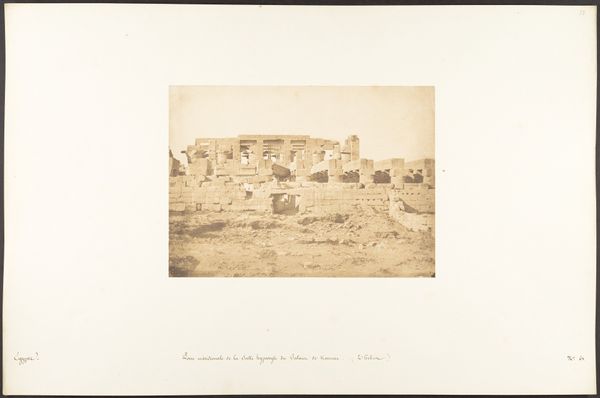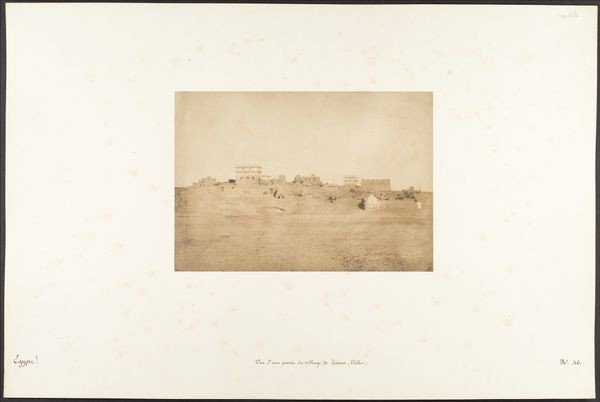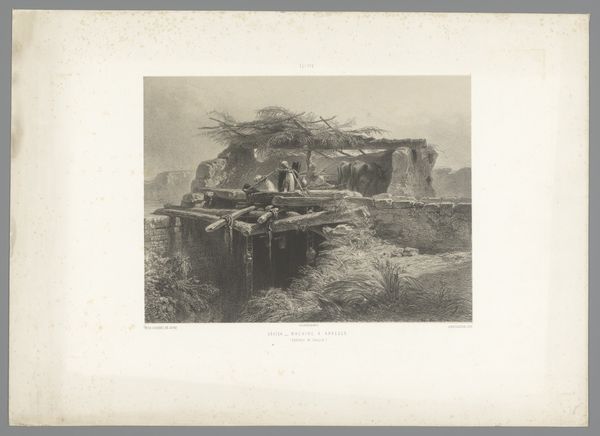
Neuilly Bombarded. General View of the rue de Chezy 1871
0:00
0:00
#
aged paper
#
toned paper
#
water colours
#
ink painting
#
ink paper printed
#
coloured pencil
#
coffee painting
#
watercolour bleed
#
watercolour illustration
#
watercolor
#
building
Dimensions: Images approx.: 19 x 25 cm (7 1/2 x 9 13/16 in.), or the reverse Mounts: 32.8 x 41.3 cm (12 15/16 x 16 1/4 in.), or the reverse
Copyright: Public Domain
Curator: Alphonse-Justin Liébert created this albumen silver print entitled "Neuilly Bombarded. General View of the rue de Chezy" in 1871. It's currently housed here at the Metropolitan Museum of Art. Editor: Whoa. It hits you like a punch in the gut, doesn’t it? That sense of utter devastation. It feels almost ghostly, this sepia-toned ruin. It’s a stark reminder of human conflict. Curator: Absolutely. This work documents the aftermath of the Franco-Prussian War and the subsequent Paris Commune, a period of intense social and political upheaval. We must recognize that war and civil unrest disproportionately affect marginalized communities, exacerbating existing inequalities related to class and access to resources. The skeletal buildings, captured in the wake of the bombardment, speak to a society in profound distress. Editor: Distress, yes, but also… resilience? I mean, someone was there, in the rubble, holding a camera, making a record. There’s a sort of defiant beauty in bearing witness, even to such ugliness. It’s like nature taking over—how the ruins almost blend into a landscape, returning the built environment to the earth. Curator: Your reading touches on a vital point regarding the medium itself. Photography, emerging as a relatively new art form at the time, became deeply implicated in constructing narratives about national identity and social order after the war. Liébert’s work, as a historical document, engages with debates around representation, trauma, and the very act of witnessing. Editor: And maybe, too, it whispers to us across time. Looking at this photograph today, it reminds us of similar scenes, the same senseless destruction happening somewhere, right now. Maybe art like this, uncomfortable as it is, can help us to see each other’s humanity in the rubble. Curator: Indeed, understanding the complex historical layers of this image compels us to critically examine contemporary structures of power, recognizing patterns of violence, displacement, and resistance that persist to this day. Editor: Right, the dialogue has to continue. Thanks for helping me find some insight today.
Comments
No comments
Be the first to comment and join the conversation on the ultimate creative platform.
